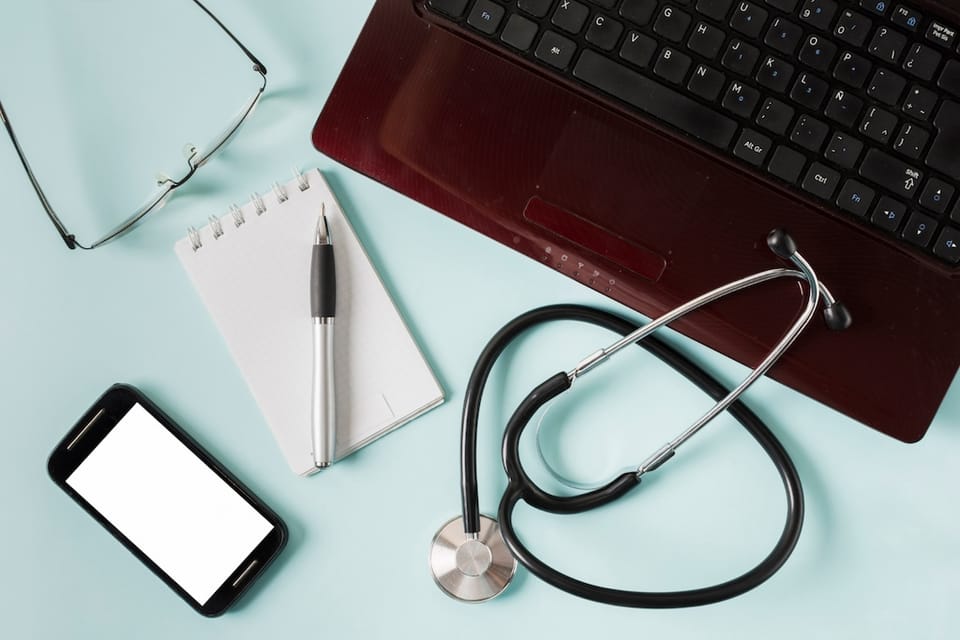The Internet of Medical Things (IoMT)
Healthcare continues to make steady progress, combining technologies like IoT (Internet of Things), AR (Augmented Reality), VR (Virtual Reality), and more. This progress has gained momentum with the arrival of the Internet of Medical Things (IoMT).
The Internet of Medical Things (IoMT) is the network of Internet-connected medical devices, hardware infrastructure, and software applications that connect healthcare information technology. Imagine all your medical gadgets, like your smartwatch or blood pressure monitor, chatting with each other through the internet. Cool, right? Well, it's more than just cool—it's changing the game in healthcare.
IoMT allows you to monitor your health 24/7, no matter where you are. It also lets doctors monitor patients remotely, offer personalized care, and catch issues before they become big problems.
Definition Of IoMT
IoMT represents the merging of technology and healthcare in a highly interconnected ecosystem. Different medical gadgets, like fancy diagnosis machines and wearable trackers, talk to each other online. This connection makes IoMT tick, helping manage healthcare and share important data.
Examples of IoMT include:
- Using remote monitoring for long-term and chronic illnesses.
- Tracking patient medication orders.
- Keeping an eye on where patients are in the hospital.
- Gathering information from patients' wearable health monitoring gadgets
- Linking medical staff with ambulances on the way to hospitals.
IoMT devices link to cloud platforms, where data is stored and analyzed. IoMT is also known as the healthcare Internet of Things (IoT). Using IoMT devices to monitor patients in their homes is known as telemedicine. It's all about making life easier for patients. , so you don't have to rush to the hospital for every little thing.
Components of IoMT
Components of IoMT are a collection of sensors and gadgets used to measure many aspects of health. Let’s look at a few below:
Sensors and Devices
These include wearable sensors like smartwatches and fitness trackers, implanted devices like pacemakers and insulin pumps, and remote monitoring tools like blood pressure monitors and glucose meters.
Connectivity Technologies
IoMT relies on effortless interaction between devices and the Internet. This is made possible through a range of wireless protocols, such as Bluetooth and Wi-Fi, cellular networks, and the Internet. These technologies allow healthcare personnel to monitor patients remotely and respond quickly to changes in their condition.
Community Use Devices
First responders and hospital emergency departments both use emergency response intelligence. Point-of-care (POC) diagnostic devices get diagnostic results outside of a standard laboratory setting by collecting and analyzing patient specimens while the patient is present or nearby, such as at a doctor's office or an outpatient treatment facility.
These gadgets collect important information about a patient's health, which can be used for quick interventions and better treatment strategies.
Importance and Significance Of IoMT
The significance of IoMT cannot be overstated. Doctors can help provide fast interventions and personalized patient care by continuous monitoring and data exchange, no matter where they are. The potential of IoMT makes diagnosis more accurate, reduces mistakes and the cost of care through the assistance of technology, and allows patients to send health information data to doctors.
IoMT will increase earlier interventions, reduce hospitalizations, and provide more healthcare options for those in remote locations. It helps doctors use data to make decisions, giving them insights into patient health and treatment and providing the most cutting-edge possibilities and outcomes for providers and patients.
Final Thoughts
Health professionals are delighted with the impressive power of the Internet of Medical Things technology. It helps them solve complex medical issues with perfection and efficiency. However, as promising as it is, we must address issues like data security and compatibility, and with improvements in technology centers, we must become key players in the future of healthcare.
The shift to IoMT isn’t coming. It’s already here. For more insights on the role of technology in healthcare, check out miraclerehabclinic.com/blog/physical-therapy-after-knee-replacement.

